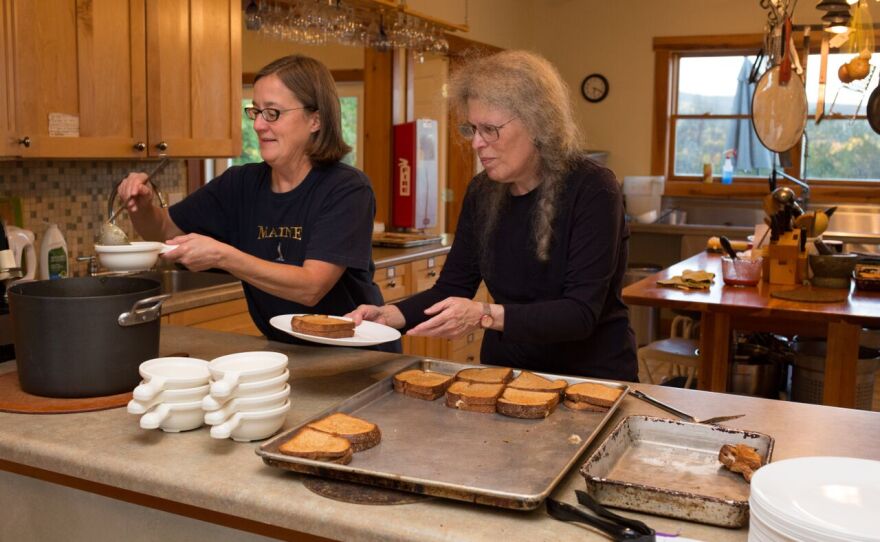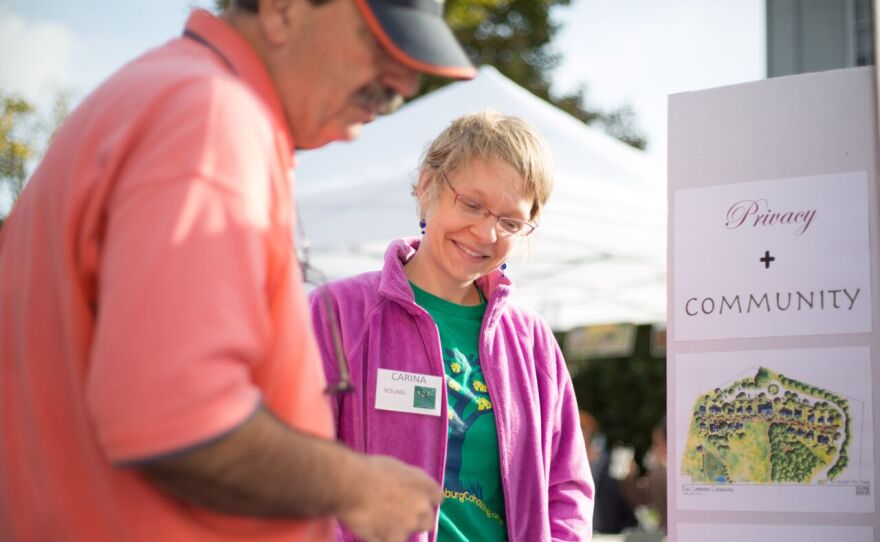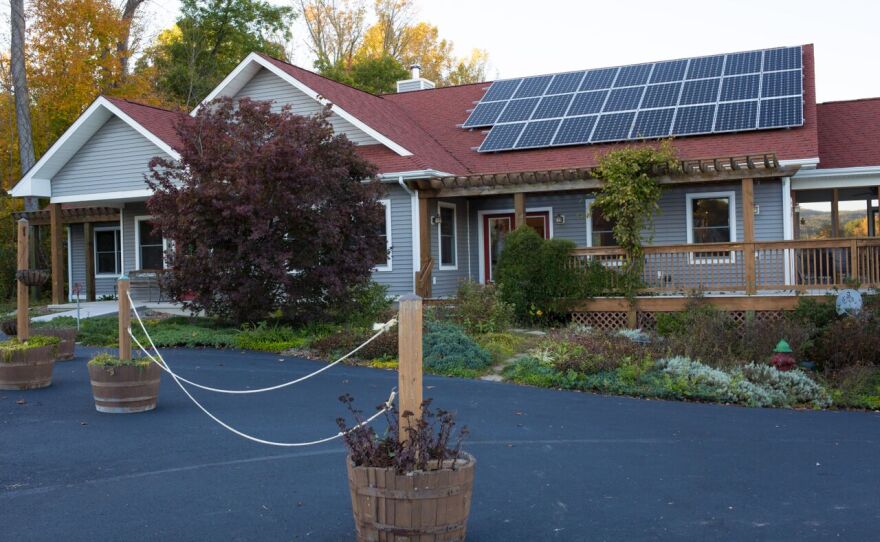Cohousing, or living in an intentional community while still retaining your own home, is a trend that has recently begun taking off in Virginia. WMRA’s Kara Lofton talked to one of the organizers of the Harrisonburg Cohousing initiative (which is still in the planning stages) and visited an active cohousing community in Blacksburg.
The idea of adults intentionally living in a community of houses that were built to face one another with pedestrian walkways, community gardens and a children’s playground in the middle, struck me as either brilliant (why aren’t all communities built this way) or some kind of weird commune.
CARINA YOUNG: The idea of cohousing is to better balance privacy that we are used to with the community that we’re lacking in general in our lives.
That was Carina Young, one of the organizers for the Harrisonburg Cohousing movement.
Harrisonburg Cohousing is one of five burgeoning communities in Virginia that are still in the planning stages. A public presentation about cohousing in Virginia is scheduled for Saturday at Richmond’s ArtWorks in Virginia, and will include representatives from the five new communities (two in Richmond and one each in Floyd, Crozet and Harrisonburg).
YOUNG: People who tend to be attracted to this idea tend to be cultural creatives. People who think a little bit outside the box – who value their privacy, but are interested in having a sense of community also.
Because of the financial requirements of joining the community – all houses are privately owned -- it does tend to end up being a middle class neighborhood, she said.
YOUNG: Most cohousing communities have clustered housing, so all the housing is close together on one part of the property. Even if they have 20 acres, all the housing is still on about three acres. Cars are deemphasized, so the parking is on the outside of the neighborhood, and there are pedestrian paths that go in between the houses.
There is no “selection process” for being a part of a community, nor are most communities religiously affiliated. However, new residents must agree to the tenants of the homeowner’s association, which usually includes paying dues to preserve common space and encouraging residents to actively participate in physical maintenance of the community.
In Harrisonburg, Young and her family are one of five local households committed to the project. They are in the process of negotiating for piece a of land in the city and are hoping to attract an additional 15-20 households. One day, it may look something like Shadowlake, an almost 15-year-old cohousing community in Blacksburg. Lisa Poley, a cohousing consultant, lives there.
LISA POLEY: So I can give you the tour.
We’re in lobby of the Common House at Shadowlake.
POLEY: So almost all cohousing communities have the core components that you see here, a large, what we call, great room, which can be used for meals, it can be used for entertainment, it can be used for parties, any number of things. And now we have it set up for the community meal, but we can push all the tables to the side, we can have music or whatever. And then we purposely have, this is supposed to be soundproof glass…
She points at a window in the back of the great room. Through it a nursery-type playroom is visible.
POLEY:…so the kids eat in about five minutes and then start yelling and making noises, so they have a place they can go do that, and still have the visual connection with parents, but you can still have adult conversation.
At a kitchen on the other end of the great room volunteers are making the weekly optional community meal. Community members who want to participate pay about five dollars a head to partake. On the menu tonight: lentil soup, grilled cheese and apple crisp.
Back outside it’s a beautiful evening. Children run down the green space in the middle of a row of houses to the playground. A woman walks her dog toward the paths that wind through wooded acreage and connect with a local community park. Three men, including Poley’s husband Will, sit on a front porch at a house in front of the swing set. They welcomed us to join them while we wait for the meal to begin.
[Background noise]
KARA LOFTON: I’m Kara, I’m from WMRA…
MARQUIS: Kristin…
MIGNONE: Fred…
STACY: Will…
Will Stacy, and fellow co-housers Fred Mignone and Kristin Marquis, talked enthusiastically at length about what they love about cohousing. Then, at my prompting, about the challenges of dealing with conflict, negotiating strong personalities, and learning that in a community like theirs, personal actions can have group consequences.
WILL STACY: You can’t hide. Who you are, is going to be out there, you know, it’s going to be out there. So honestly to grow relationships you have to take risks and be honest and that’s the toughest things – to continually do it for 15, 20 years.






